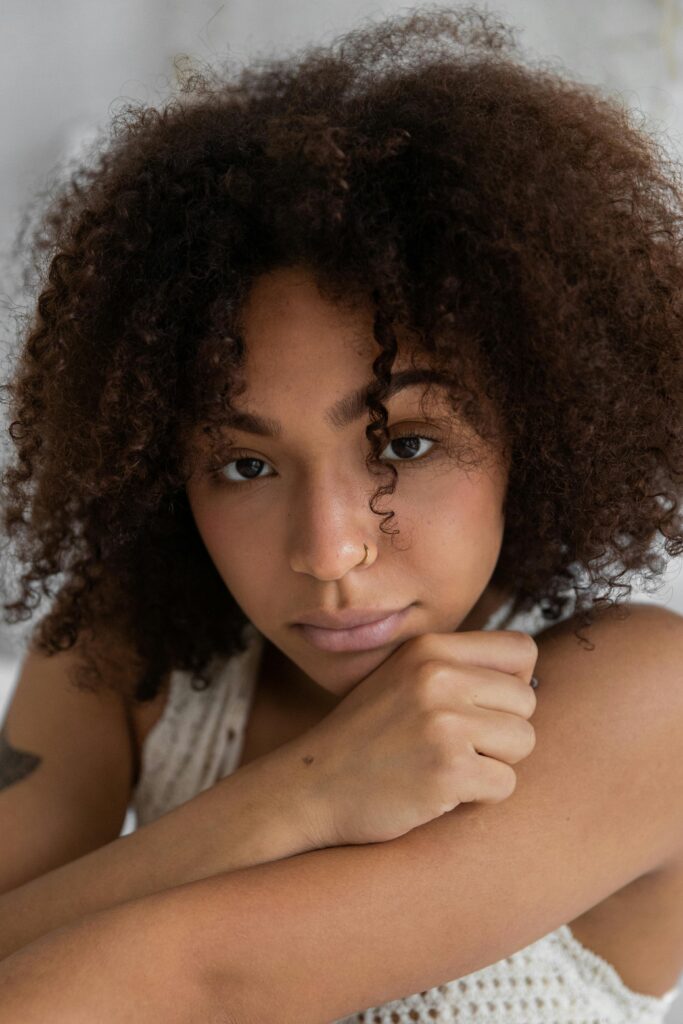Curly hair is as unique as a fingerprint, with each curl pattern telling a story of texture, movement, and individuality. For women with curly hair, understanding their specific curl type is not just about aesthetics—it’s a science-backed approach to tailoring hair care routines that work in harmony with natural textures. When you know your curl type, you unlock the secrets to healthier, more manageable, and vibrant hair that embraces its natural beauty.
Curls are categorized based on the shape of the hair follicle. Hair that grows from oval or asymmetrical follicles tends to have more curves, creating waves or coils. The degree of curl depends on the follicle’s shape and angle, which is determined by genetics. Broadly, curl types range from loose waves to tight coils. Haircare experts often refer to the curl typing system that includes categories like wavy, curly, and coily, further divided into subtypes. While this system is a helpful guide, every head of hair is a combination of patterns, textures, and needs.
Wavy hair forms gentle curves and often appears as a relaxed S-shape. These waves can range from barely-there bends to defined loops. Wavy hair tends to be prone to frizz because its natural shape makes it harder for oils to travel down the hair shaft. Lightweight products like gels, mousses, and leave-in conditioners help define waves while maintaining their natural bounce.
Curly hair, with its more pronounced S or spiral shapes, is a middle ground between waves and coils. These curls have a natural springiness that adds volume but can be prone to dryness due to the difficulty of natural scalp oils reaching the ends. Hydration is essential for curly hair, with deep conditioners and curl creams providing much-needed moisture and definition.
Coily hair, often described as kinky or Afro-textured, features tightly coiled or zigzag patterns. These curls have the most shrinkage and are the most fragile of all curl types. Their tightly wound structure makes them prone to breakage and requires extra care to keep them healthy. But when nourished with the right products and techniques, coily hair boasts unparalleled texture and versatility. Products rich in natural oils and butters, along with gentle handling, are key to maintaining its vibrancy.
While identifying your curl type provides a foundation, understanding your hair’s porosity, density, and elasticity takes your routine to the next level. Hair porosity refers to how well your hair absorbs and retains moisture, which is crucial for selecting products that hydrate effectively. Low-porosity hair repels moisture and benefits from lightweight, water-based products, while high-porosity hair soaks up moisture quickly but loses it just as fast, requiring heavier creams and oils.
Density refers to the amount of hair on your scalp and influences how much product you’ll need. High-density hair can handle richer products without appearing weighed down, while low-density hair benefits from lightweight solutions that don’t flatten its natural volume. Elasticity, or your hair’s ability to stretch and return to its original shape, determines how your curls react to styling. Curls with low elasticity may appear limp and can benefit from protein treatments that strengthen the hair shaft.
Identifying your curl type is also an opportunity to embrace its unique challenges and celebrate its beauty. The right techniques can make all the difference. When washing your hair, consider co-washing or using sulfate-free shampoos that cleanse without stripping away natural oils. Detangling curly hair requires patience and a gentle touch; using a wide-tooth comb or your fingers while the hair is wet and saturated with conditioner prevents unnecessary breakage.
Drying curly hair is an art form in itself. The friction from towels can cause frizz and disrupt curl patterns, so opt for microfiber towels or T-shirts to blot excess moisture. Air drying allows curls to form naturally, while diffusing adds volume and shape. Remember to handle your curls with care, as tugging or over-manipulating them can lead to loss of definition and damage.
Styling products should enhance your natural texture rather than work against it. Wavy hair thrives with lightweight products that boost volume, while curl creams and gels bring out the best in curly textures. Coily hair benefits from heavier creams and butters that lock in moisture and protect the hair from environmental stressors.
Caring for curly hair is a journey of discovery, experimentation, and self-love. It’s about understanding that no two heads of curls are alike, and each strand tells its own story. By taking the time to identify your curl type and tailoring your routine accordingly, you celebrate the uniqueness of your hair and unlock its full potential. When armed with knowledge and the right products, your curls can be a source of confidence, beauty, and joy every single day.





